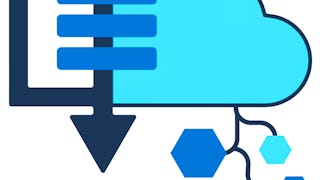Azure lets you create applications composed of various components: website front-ends, back-end services, and triggered functions that perform compute-on-demand services. Azure also includes various communication strategies to let these various components pass data to each other. In this course, you will learn how to leverage these communication services to create scalable, efficient solutions out of testable components.

4 days left: Get a Black Friday boost with $160 off 10,000+ programs. Save now.


Connect Your Services with Microsoft Azure Service Bus
This course is part of Microsoft Azure Developer Associate (AZ-204) Exam Prep Professional Certificate

Instructor: Microsoft
5,475 already enrolled
Included with
(38 reviews)
Recommended experience
What you'll learn
How Azure Functions enable the creation of event-driven, compute-on-demand systems that can be triggered by various external events.
Implement the publish-subscribe pattern in the cloud using Azure Queue storage
Use Azure Service Bus topics and queues in a distributed architecture to ensure reliable communications
Connect sending and receiving applications with Event Hubs so you can handle extremely high loads without losing data
Skills you'll gain
Details to know

Add to your LinkedIn profile
21 assignments
See how employees at top companies are mastering in-demand skills

Build your Software Development expertise
- Learn new concepts from industry experts
- Gain a foundational understanding of a subject or tool
- Develop job-relevant skills with hands-on projects
- Earn a shareable career certificate from Microsoft

There are 5 modules in this course
When you have an application that consists of components running on different computers, servers, and mobile devices, reliable communications between those components can be difficult and unreliable. Azure provides several technologies that you can use to communicate more reliably, including Storage queues, Event Hubs, Event Grid, and Service Bus. This module shows you how to choose the best technology for your communication task.
What's included
9 videos3 readings2 assignments1 discussion prompt2 plugins
In this module, you will learn how to write C# code in a custom application that sends and receives messages using Azure Service Bus topics and queues.
What's included
6 videos4 readings5 assignments
In this module, you will learn how to use Azure Queue storage to handle high demand and improve resilience in your distributed applications.
What's included
5 videos6 readings5 assignments
Implement the publish-subscribe pattern in the cloud using Azure Queue storage
What's included
8 videos8 readings8 assignments
In this module, you will take a practice exam that covers key skills measured in the Exam AZ-204: Developing Solutions for Microsoft Azure.
What's included
2 videos3 readings1 assignment1 discussion prompt
Earn a career certificate
Add this credential to your LinkedIn profile, resume, or CV. Share it on social media and in your performance review.
Explore more from Software Development
 Status: Free Trial
Status: Free Trial Status: Free Trial
Status: Free TrialMicrosoft
 Status: Free Trial
Status: Free TrialMicrosoft
Why people choose Coursera for their career




Learner reviews
38 reviews
- 5 stars
78.94%
- 4 stars
15.78%
- 3 stars
2.63%
- 2 stars
0%
- 1 star
2.63%
Showing 3 of 38
Reviewed on Jan 24, 2024
Great course but the information is not up to date

Open new doors with Coursera Plus
Unlimited access to 10,000+ world-class courses, hands-on projects, and job-ready certificate programs - all included in your subscription
Advance your career with an online degree
Earn a degree from world-class universities - 100% online
Join over 3,400 global companies that choose Coursera for Business
Upskill your employees to excel in the digital economy
Frequently asked questions
To access the course materials, assignments and to earn a Certificate, you will need to purchase the Certificate experience when you enroll in a course. You can try a Free Trial instead, or apply for Financial Aid. The course may offer 'Full Course, No Certificate' instead. This option lets you see all course materials, submit required assessments, and get a final grade. This also means that you will not be able to purchase a Certificate experience.
When you enroll in the course, you get access to all of the courses in the Certificate, and you earn a certificate when you complete the work. Your electronic Certificate will be added to your Accomplishments page - from there, you can print your Certificate or add it to your LinkedIn profile.
More questions
Financial aid available,


